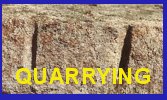|
References to Native American Chamber Like Structures
Forbes, Harriette Merrifield
1889 The Hundredth Town: Glimpses of Life in Westborough. 1717-1817. Boston: Press of Rockwell and Churchill.
“More persons now living remember Simon Gigger. He was short and small, living first in a swamp towards Shrewsbury, in a hut built of stones, the walls being two feet thick at the base, and gradually growing narrower at the top. It sloped from the bottom to the ridge-pole; the stones were covered with sods and branches of trees. In the top was a hole to let out the smoke from the wood-fire blazing underneath. A plank for a table comprised the furniture; and here sat "old Gigger," surrounded by his family, making baskets and drinking. There lived with him his brother, Daniel, his sister, Sallie, — who escaped killing one of her white neighbors, only because the gun refused to go off, — and Bets Hendricks, the owner of the famous violin, to whose music the people in all the taverns, and the children in all the farm kitchens, danced sixty years ago. ...The remains of his old shanty can still be found near the arch bridge on the Boston & Albany railroad. It is on the north side of the railroad about 20 roads [rods] east of the western intersection of the old and new road-beds, half-dozen rods north of the new embankment” (page 173-174)
*Note: 1 rod = 16 1/2 feet
“There was a family of Indians living on John Belknap’s old place at Rocklawn, in a kind of dug-out in the side of the hill, It was enclosed by stone walls, covered by sods, with grass growing on the roof. The door was about four feet square.” (Page 175)
|










